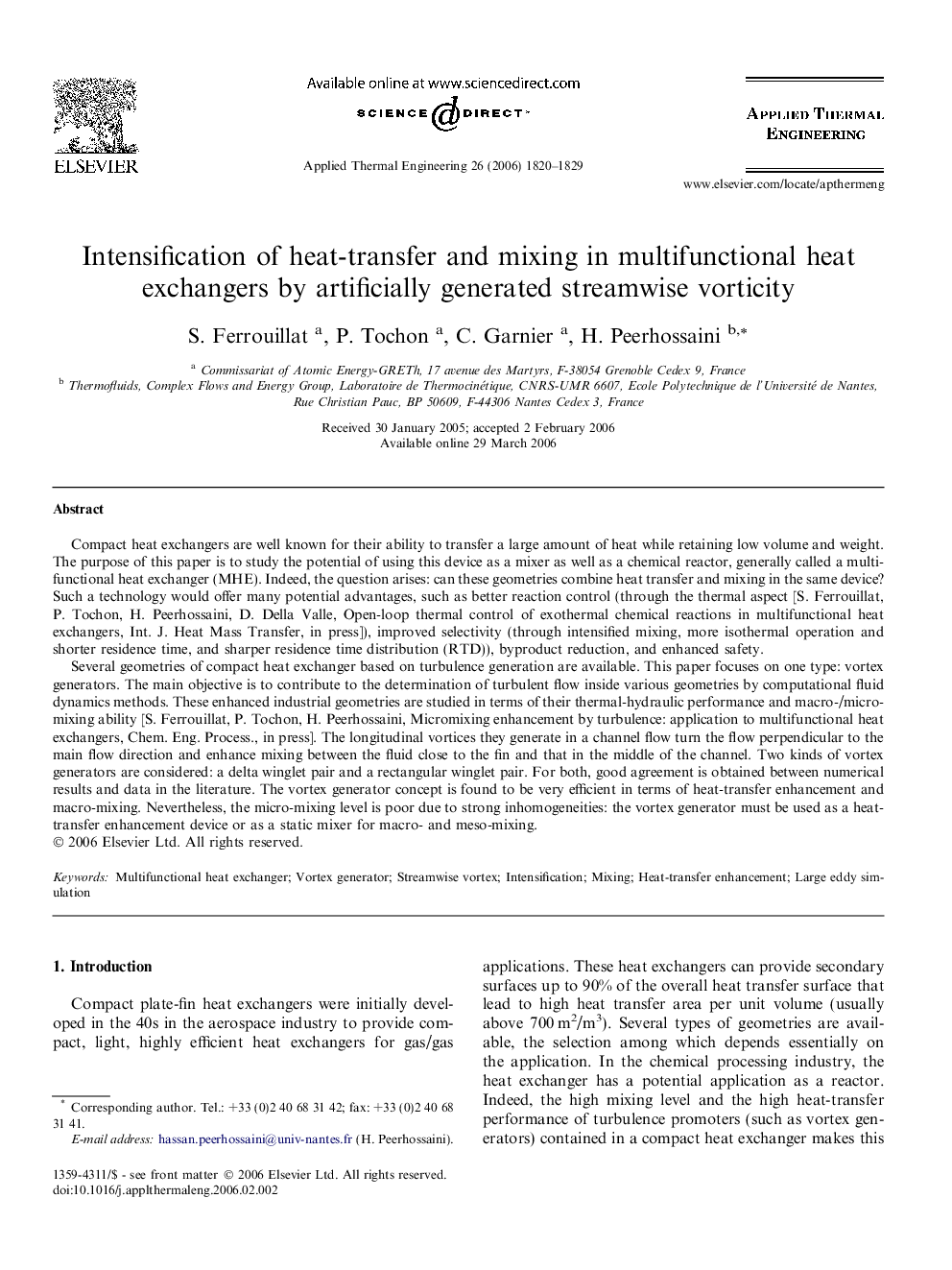| کد مقاله | کد نشریه | سال انتشار | مقاله انگلیسی | نسخه تمام متن |
|---|---|---|---|---|
| 649546 | 884661 | 2006 | 10 صفحه PDF | دانلود رایگان |

Compact heat exchangers are well known for their ability to transfer a large amount of heat while retaining low volume and weight. The purpose of this paper is to study the potential of using this device as a mixer as well as a chemical reactor, generally called a multifunctional heat exchanger (MHE). Indeed, the question arises: can these geometries combine heat transfer and mixing in the same device? Such a technology would offer many potential advantages, such as better reaction control (through the thermal aspect [S. Ferrouillat, P. Tochon, H. Peerhossaini, D. Della Valle, Open-loop thermal control of exothermal chemical reactions in multifunctional heat exchangers, Int. J. Heat Mass Transfer, in press]), improved selectivity (through intensified mixing, more isothermal operation and shorter residence time, and sharper residence time distribution (RTD)), byproduct reduction, and enhanced safety.Several geometries of compact heat exchanger based on turbulence generation are available. This paper focuses on one type: vortex generators. The main objective is to contribute to the determination of turbulent flow inside various geometries by computational fluid dynamics methods. These enhanced industrial geometries are studied in terms of their thermal-hydraulic performance and macro-/micro-mixing ability [S. Ferrouillat, P. Tochon, H. Peerhossaini, Micromixing enhancement by turbulence: application to multifunctional heat exchangers, Chem. Eng. Process., in press]. The longitudinal vortices they generate in a channel flow turn the flow perpendicular to the main flow direction and enhance mixing between the fluid close to the fin and that in the middle of the channel. Two kinds of vortex generators are considered: a delta winglet pair and a rectangular winglet pair. For both, good agreement is obtained between numerical results and data in the literature. The vortex generator concept is found to be very efficient in terms of heat-transfer enhancement and macro-mixing. Nevertheless, the micro-mixing level is poor due to strong inhomogeneities: the vortex generator must be used as a heat-transfer enhancement device or as a static mixer for macro- and meso-mixing.
Journal: Applied Thermal Engineering - Volume 26, Issue 16, November 2006, Pages 1820–1829